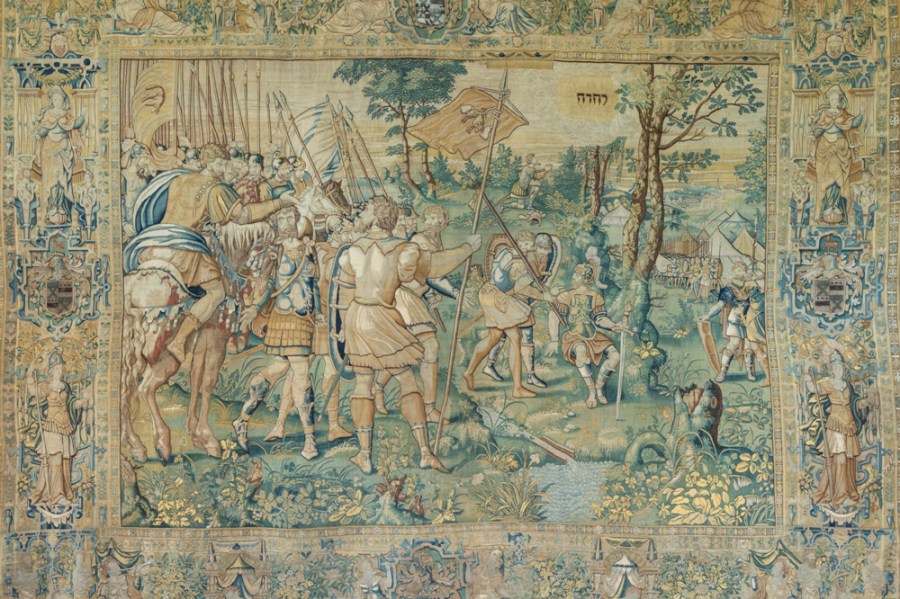In 1592, Bess of Hardwick was in search of a bargain – and she got one. From the estate of Sir Christopher Hatton, a favourite of Elizabeth I, Bess purchased one of the largest sets of tapestries in existence for the knock-down price of £326 15s 9d, approximately £100,000 in today’s money. The Gideon Tapestries, as they are known, have hung ever since at Hardwick Hall in Derbyshire, where the National Trust has just completed a 20-year conservation programme – at a cost of around £1.7m – to restore them to their former glory.
Many layers of history can be read in these remarkable tapestries. Hatton commissioned them from a Flemish workshop for his own Long Gallery at Holdenby Hall, completed in 1583 in tribute to Elizabeth I. The house was decorated with its political role in mind, and the choice of tapestries may reflect this. The Old Testament story of Gideon tells how he was called by God to save the Israelites from idolatry and win a miraculous victory over the Midianite army. Besides the religious significance of the story for Elizabeth’s Protestant regime, at one point a sheep’s fleece becomes the vehicle for a sign from God.
Elizabeth called Hatton her ‘sheep’ (a weak pun on mutton), so this may explain the choice of subject matter. On the other hand, at 20 feet high, the Gideon tapestries are prodigiously large, and there may have been a limited number of subjects available for weaving at this scale. The designs had originally been woven c. 1560 for the Medici family, but as textile historian Helen Wyld has pointed out, Hatton’s set was almost a third taller again, an effect achieved by extending landscape details and widening borders. Perhaps due to their size, Hatton was forced to compromise on materials. The weaving is relatively crude, with lower grade dyes and less silk thread than is found other examples: the Gideon tapestries aim for a big effect on a budget.
After Hatton’s death, savvy Bess of Hardwick acquired the tapestries at a reduced rate, partly because Hatton’s heir needed to pay off the debts of the ‘dancing Chancellor’, and partly because Bess needed to replace his coats of arms, woven into the borders, with her own. In the event, however, she saved almost £4 (£1,265 in 2023) by having her arms painted on cloths, not woven, and sewn over Hatton’s, with a bit of brown paint and antlers to convert his crest, a golden hind, into the Cavendish stag – alterations that can still be seen today. She installed them at Hardwick New Hall, the house she was then building on her family estate, with money from three previous marriages (and widowhoods). The 13 Gideon tapestries have hung in the Long Gallery ever since their purchase, forming the visual climax for centuries of visitors to Bess’s dream house. (Read more.)
What Child is This?
1 week ago


















No comments:
Post a Comment